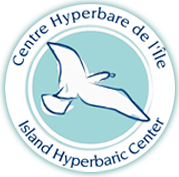The Silent Injuries of War- PTSD and the significant benefits of HBOT
Hyperbaric Oxygen Therapy (HBOT) has been explored as a potential treatment for the “silent injuries” of war. The overlapping constellation of signs and symptoms in returning veterans makes diagnostic certainty difficult. Post-Traumatic Stress Disorder (PTSD), and the persistent deficits of mild traumatic brain injury(TBI) overlap to a point it is impossible to determine where one begins and the other ends causing the most proficient diagnostician to make assumptions that may or not be true. What we must do is to objectively exam the response of these individuals to intervention.
In November of 2014 the results for the largest study of U.S. combat veterans were published in JAMA Internal Medicine. What an unbiased assessment in an Invited Commentary appearing in that same issue of JAMA Internal Medicine reported-
Results showed that the HBO procedures were associated with significant improvements in post-concussion symptoms and secondary outcomes, including PTSD (which most participants had), depression, sleep quality, satisfaction with life, and physical, cognitive, and mental health functioning.
Here are some of the benefits that other studies have been observed or reported of incorporating HBOT into the treatment of PTSD:
1. Neurological Improvement: HBOT can increase oxygen delivery to the brain, which may help in repairing and regenerating brain tissues. This increased oxygenation can potentially improve symptoms related to brain function, such as cognitive impairments and mood instability, which are often seen in PTSD patients.
2. Reduction in Inflammation: There is evidence suggesting that HBOT can reduce systemic inflammation, including in the brain. Since inflammation is thought to play a role in the pathophysiology of PTSD, reducing inflammation could potentially alleviate some symptoms of the disorder.
3. Enhancement of Neuroplasticity: HBOT has been shown to promote neuroplasticity, which is the brain’s ability to reorganize itself by forming new neural connections. This can be crucial in the recovery from mental health disorders like PTSD, where certain neural pathways associated with traumatic memories might need modulation.
4. Alleviation of Anxiety and Depression: Some studies suggest that HBOT can help in reducing symptoms of anxiety and depression, which are commonly associated with PTSD. The therapy might influence neurotransmitter systems or reduce the physiological stress response, contributing to improved mood and reduced anxiety.
5. Improvement in Sleep Patterns: Patients with PTSD often experience disruptions in sleep, including insomnia and disturbed sleep patterns. HBOT might help in normalizing these patterns, possibly through its effects on brain oxygenation and reduction in anxiety.
While these potential benefits suggest that HBOT could be a valuable addition to PTSD treatment, especially in complex cases involving TBI, it is important to note that research is still ongoing.
Clinical trials and further studies are needed to fully understand the efficacy and optimal protocols for using HBOT in treating PTSD. Clinicians should consider individual patient cases and existing evidence when deciding on incorporating HBOT into PTSD treatment plans.
